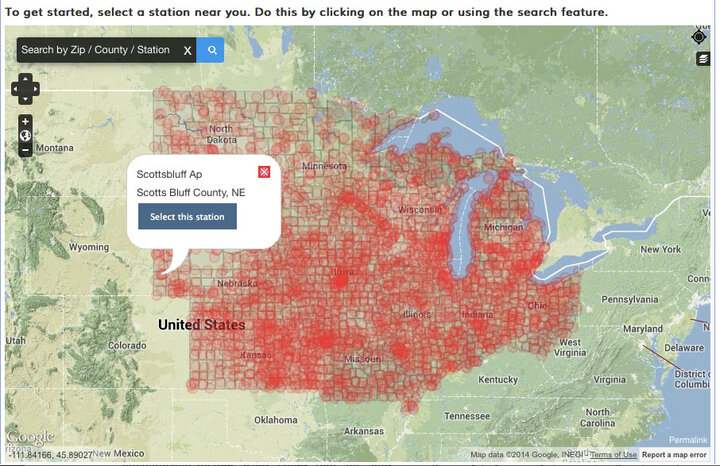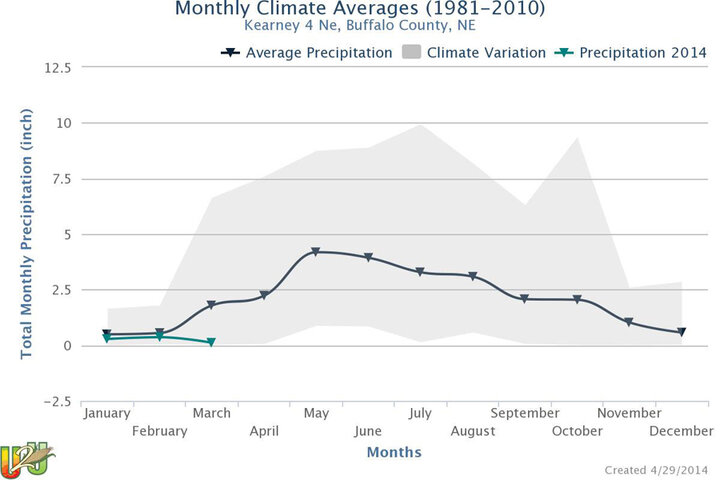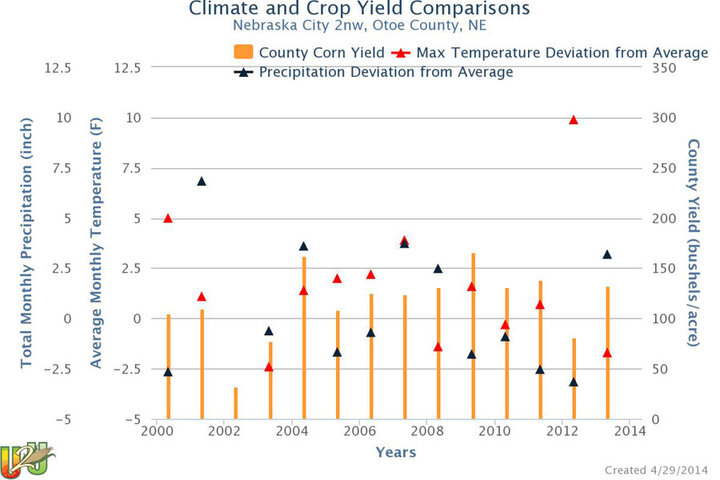


What is the normal monthly rainfall where I live or where my farm is? How much variability in rainfall can I expect during the growing season? How does this year compare to the long-term average? How does corn and soybean yield compare with monthly or seasonal temperature, rainfall, and growing degree days?
The Ag Climate View tool (www.agclimate4u.org) is a one-stop shop to answer such questions.
Background Information On The Project
Useful to Usable (U2U): Transforming Climate Variability and Change Information for Cereal Crop Producers, is an integrated research and extension project working to improve farm resilience and profitability in the North Central Region by transforming existing climate information into usable knowledge for the agricultural community. Ag Climate View tool is part of many decision support tools being developed through this collaborative effort of nine universities including UNL (through UNL Extension, High Plains Regional Climate Center, and National Drought Mitigation Center). In this article, we are introducing Ag Climate View tool which has been designed so useful climate information can be translated into usable information to aid producer decision-making.
How Can I Access Ag Climate View Tool?
This tool is available at www.agclimate4u.org. Once you click on the "Decision Dashboard" tab on the front page, you will be able to click on "AgClimate ViewDST." Figure 1 is a snapshot of this page. Select the station nearest your area of interest to see climate data, yield trends, and a comparison chart for that particular location.
How Is This Tool Relevant To Me?
Climate, particularly at key growth stages, is a major factor of agricultural production. For example, corn growth is highly sensitive to temperature and moisture during the silking and grain filling growth stages. One great aspect of this tool is that it can translate 30 years of weather data into simple yet usable maps for your specific location. If you want to keep track of climate for this growing season and compare it with the long-term average, this tool can do that easily. For example, Figure 2 shows this year's rainfall in comparison with the long-term trend. By looking at this graph, we can easily determine that the March precipitation for Kearney was below normal compared to the 30-year average.
Another useful aspect of this tool is that it lets you compare climate variables in relation to the county average yield reported by the USDA National Agricultural Statistics Service. For example, if you want to see how corn and soybean yield compared with extreme or near normal climate, this tool can provide such information in historical context. For example, if we run into a cooler or hotter than normal May, how has that been associated with historical yield trends? This comparison of yield and climate could help us answer such questions. The figure below shows temperature and precipitation deviations from 30 years of records in comparison with corn yield for Nebraska City. You can see that relatively low yield years have had hotter and drier conditions in May.
We encourage you to visit www.agclimate4u.org and evaluate Ag Climate View tool.
Brief Survey on this Tool (6 Questions)
In order to assess effectiveness of this tool, the U2U team would like your feedback. Your comments will be critical in helping improve this tool to make it more usable for ag related decisions. We would invite you to complete a brief survey at http://go.unl.edu/fzuf.
Tapan Pathak, Extension Educator in Climate Variability
Martha Shulski, Director, High Plains Regional Climate Center
